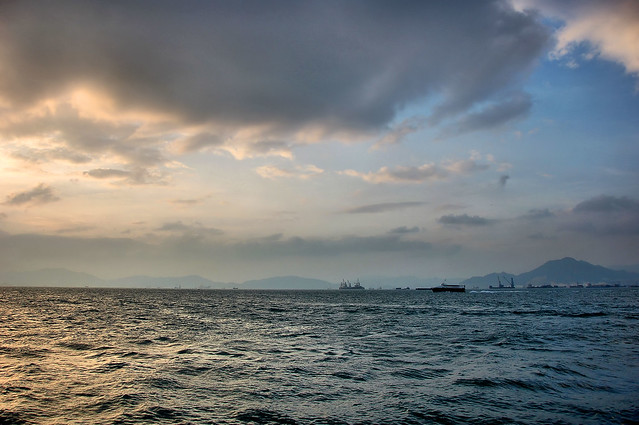
Yes to a rules-based system in the Indo-Pacific. But who rules, who writes the rules, and how fares the system?
And yes to the reality of a rapidly evolving security order in the Asia–Pacific. But how goes the evolution, what’s the order, and where’s the security? Please mind the speed.
My annual immersion in the Shangri-La Dialogue last weekend offered much to digest on the tone and temperature of the times.
It’s symptomatic of the rules-and-order quandary that even the geographic construct is contested: Indo-Pacific or Asia–Pacific? The region struggles with how it should define itself. More starkly, the region struggles.
The defence ministers kept coming back to the growing sense of flux and danger. It recalled Joseph Nye’s line from the 1990s: ‘Security is like oxygen—you tend not to notice it until you begin to lose it, but once that occurs there is nothing else that you will think about.’
To see how Shangri-La struggled with what the region is losing, draw together the contributions from ASEAN members.
While Southeast Asia always offers a range of perspectives, ASEAN strives to define the mid-point of any contest. The regional grouping that never wants to choose has a sharp eye for the perils of competing options.
Singapore’s Prime Minister Lee Hsien Loong did temperature and tone duty with his keynote address, lamenting the lack of strategic trust between the US and China. Lee opened with these words: ‘Our world is at a turning point. Globalisation is under siege. Tensions between the US and China are growing and, like everyone else, we in Singapore are anxious.’
Before concluding the speech with a call for the wise course of openness, integration and cooperation, Lee’s penultimate thoughts sketched scenarios of a future drawn from history:
At different times in the last two centuries Southeast Asia has seen rivalry between great powers. It has experienced destruction and suffering from war and occupation. It has been divided into opposing camps. It has seen how isolation from the world economy led to stagnation and sometimes conflict. At other times, it has benefited from international cooperation that created an open, stable environment where countries could prosper in peace.
On a long view, we cannot rule out any of these eventualities.
The Philippines’ defence minister, Delfin Lorenzana, said the untethering of networks of economic interdependence raised the risk of confrontation, even of sleepwalking into war:
What we are dealing with is not only a shift in the material balance of forces in our region, but also in our very conception of the emerging regional order—and, respectively, the anchors of peace and prosperity in the twenty-first century. The consequence of such a seismic geopolitical shift is a troubling form of superpower rivalry, which has now extended—to the anxiety of many in the region—even to the realm of trade, investment and cyberspace.
If left unchecked, this new and perilous dynamic could potentially upset globalisation as we know it.
Using a more traditional ASEAN-centric approach, Malaysia’s defence minister, Mohamad Sabu, offered a three-tiered view of the uncertain and complex regional order:
- Geopolitical competition between the US and China will shape the stability of the Asia–Pacific.
- The intra-ASEAN dynamic faces overlapping border claims, large movements of refugees and a rush of internal conflict. As an example, he said, Malaysia believes the Rohingya issue is no longer merely just a domestic Myanmar concern.
- Non-traditional security issues such as maritime violence (sea piracy and robbery), terrorism and cybersecurity will need to be addressed.
In the final speech of the dialogue, Singapore’s defence minister, Ng Eng Hen, said Asia had been transformed over the past two decades. But the tariff and technology barriers of the US–China trade war ‘have altered the trajectory of this region onto an altogether different orbit’.
Ng said an ‘America first’ foreign policy had implications ‘as troubling as they are unpredictable. It is, in essence, a disruptive change, not only for the US and its allies but for the world.’
The prospect is for parallel blocs with deepening economic and security divisions. The ultimate loser’s game, Ng said, would be for the US and China to force individual countries to choose sides on issues of trade, technology, security and comprehensive partnership.
The challenge for both the US and China, amid their bilateral struggle, as dominant powers in Asia, is to offer that inclusive and overarching moral justification for acceptance by all countries, big and small, of their dominance beyond military might. Both countries have cited security as the basis for current positions—the US in trade and China in the South China Sea. But whatever the underlying motivations for either country, if America First or China’s rise is perceived to be lopsided against the national interests of other countries or the collective good, the acceptance of the United States’ or China’s dominance will be diminished. Countries will hedge first in trade ties and later, inevitably, in security alliances.
In the novel Lost horizon, Shangri-La was a mythical utopian place in the mountains. By contrast, the future over the horizon of the Shangri-La Dialogue is more murky than mythic, more scary than utopian.

